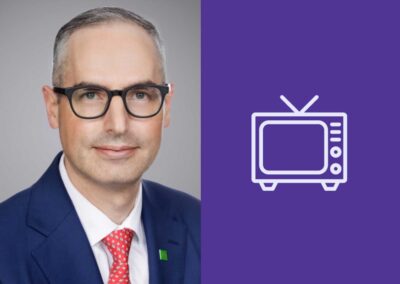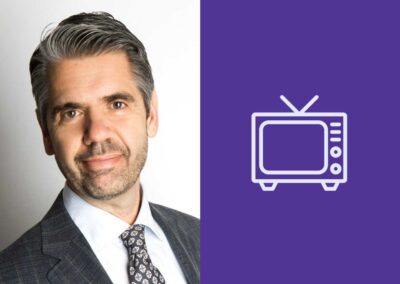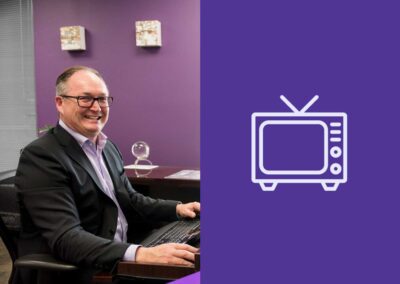In this first of a two-part video interview series, John Leroux, President of CEA Wealth Management interviews Tim Fox of NEI Investments.
This video was conducted in English.
Subtitles and transcripts are available in both English and French, by clicking directly on the CC icon. Click on the settings gear icon or the YouTube icon for more language and subtitle options.
Transcript:
John: I’m John Leroux and I’m here with Tim Fox from NEI Investments. Well, tell me a little bit about what you do at Nei.
Tim: Sure, so essentially I manage a team of investment professionals who are working with advisers just like you every single day and they’re sharing our investment philosophy here at Nei and our process as it relates to investing responsibly
John: Well let’s talk a little bit about that ESG environmental social and governance or as we commonly refer to it as responsible socially responsible investment. What does that really mean?
Tim: It’s a great question as you mentioned the industry defines RI using those three factors right and some of your listeners may be familiar with the E the S and the G as you’ve mentioned. What does it really mean? It’s simply boiled down to the air that we breathe, it’s the water that we drink, it’s how companies treat their employees and how those companies take responsibility for the way in which they operate. Why is it important? To your second question… It’s because when you look at the world from an ESG perspective two things happen: on, you can identify risks and second, you can recognize potential opportunities and I think both those things can have a significant impact on share price.
John: Now that you say share price, how does that apply to your overall stock selection process when overlaying ESG?
Tim: It’s a great question. So when we analyze a company, and to see if we want to include it in a portfolio, we assess numerous financial factors like profitability, cash flow, projections, valuations in other words. Is the company priced fairly, what are the growth expectations, what’s the management team like, it goes on and on and on. What we do is we take it one step further and we add the data that we collect using our responsible investing lens and that really helps us do those two things right: identify risks so stay out of trouble and second, recognize potential opportunities that we see through the ESG Lens.
John: So tell me that difference in the way that you look at things. How is it compared to people in non ESG stock selection funds?
Tim: Sure well this isn’t really anything new in terms of the way that we look at the fundamentals. Say traditional investing has always taken into account lots and lots of inputs. It’s just right now there are more and more data points being made available to investors than ever before so we take that data which is more qualitative. How do companies interact, what risks can we mitigate, what opportunities can we see? Perfect example that I’ll give you that really uses the ESG lens is, you know some things that we’re seeing in the news right now. Imagine uh you turn on the 6:00 news and you see the wildfires that we’re having in Jasper Alberta. As a result of that we look at investing in companies that maybe create wildfire mitigation equipment or fire protection coatings. We wouldn’t have seen that without an ESG lens because we look at the impact that we’re having on you know our natural habitat. Another example is what if a company has poor governance or the G. If they have poor governance, there may be a privacy breach.Millions and millions of customers’ personal data is compromised and as a result the stock tumbles. So those are examples that using an ESG lens really gives us an opportunity to look at the world a little differently in addition to the fundamentals that most asset managers look at.
John: Are there any other key differences that non-ESG managers and you guys have that are worth highlighting.
Time: Sure like traditional investing, we’ve got a toolkit and that toolkit is what we use to help influence change at the companies that we hold. So what’s different with us is not only do we invest in those companies, but we can have an impact on the way that they operate. So this includes voting at the company’s annual general meetings. This means engaging dialogue like you and I are doing now. All those activities, things we called stewardship activities, give us an opportunity to really have an input and impact on the companies that we’re investing in, beyond just a sort of a bottom line share price perspective.
John: Oh cool. So you’ve touched on some of those ESG fact factors, is there maybe some examples that you can share on how this differentiates and is relative uh sorry is relevant to investors.
Tim: Yes, like I mentioned before, there’s things that are happening in our world every single day that gives us an opportunity to look at things differently. uh I ref I reflect back on, and you may you are surely old enough to remember, the Exxon Valdez oil spill and the implications that had. What’s really absolutely astonishing is back then, in 1989, when that disaster occurred, did you know the share price only fell 4%…only 4% and in fact four weeks after that event the share price had completely recovered. Well fast forward you know a couple decades later and we have another Exxon Valdez in a different part of the world. This time this is BP or petroleum BP, British Petroleum. Their share price went down over 40% as a result of a similar oil spill. So the point is the world now is watching and what was not on their radar back you know in the 80s and and early 90s. Now very much the world is keeping a very close eye on the way the companies operate and as a result we can look at those companies differently and minimize risk and look for opportunities.
John: Yes and those opportunities in the right space do offer a different perspective for investors uh talk to me a little bit about that.
Tim: Sure, opportunities, you know these, are opportunities that exist, you know everywhere we look, and what we’ve got to do is make sure that we’re minimizing the risks associated with them. And what we’re looking at is risks that include certain things, reputational risks. So we talked about British Petroleum and we talked about Exxon Valdez. Those reputational risks are massive, because at the end of the day it has an impact on the bottom line share price. So we look at reputational risks, we look at regulatory risk, as you know, is the government or are the environmental regulations requiring companies to limit their greenhouse gas emissions. They could have potential cost to a company if they’re not abiding by those regulations and they could get fined again, affecting share price and business risks as I said to you before. What if they are not playing nice from a business risk perspective and they’re putting their business at risk and at the end of the day that’s going to have an impact on share price as well. So all those things need to be taken into account when we assess the risks associated with a company.
John: Well in assessment comes the thought carbon footprint MH and is there a way that we can take a look at how the funds work and if there is a possibility of measuring a funds carbon footprint on the world?
Tim: Yeah everybody wants to know the carbon footprint and obviously in Canada that’s a touchy subject because there’s ATT tax associated with that. So if we take it one step back, really, carbon footprint, certainly from a company perspective, is the total amount of greenhouse gas emissions that it generates from its business. Simple right, the challenge is it’s really hard to measure because that could come from all the different energy sources. So if it was really easy if the company just plugged in their electrical socket and ran their business out of that one socket that’s easy peasy, we know exactly how much energy they’re generating. But what happens when you think of a large company like Loblaws and all the sort of the downline businesses, and all the things that are involved in getting those that those products on those shelves that’s hundreds and hundreds of companies across the supply chain that are part of that business and it’s a real real big challenge to understand all the emissions that are created within that supply chain, really difficult to measure. So you know it sounds simple enough but when you look at complex companies and there are many it becomes bigger and a bigger challenge to try and figure out what that footprint actually looks like.
John: Well it’s funny this leads into a very different question: the word is greenwashing … What does the term really mean?
Tim: Sure. Greenwashing really refers to, you know, false or misleading information with respect to a company’s sustainability credentials. So in other words if a company makes a claim about the way that they invest and they make it sound more environmentally friendly or more socially responsible than it actually is. That’s in fact greenwashing and it can also apply to companies when they say that they hold themselves out to be more environmentally friendly than they actually are or maybe they focus on one positive area and they omit others. Here’s a perfect example that you might recall: A while back Volkswagen they were in the news because they were accused of cheating on pollution tests and they were accused of modifying engine software which made the cars look better on paper from an emission perspective. Well you know, obviously the proof is in the pudding. They were taken to task and this has cost VW somewhere in a range of 31 billion EUR to date. So that’s a perfect example of greenwashing: where companies make claims that may not necessarily actually be accurate.
John: I believe Toyota has been in the news for something similar recently
Tim: There’s no shortage especially as it relates to the automotive sector because emissions are a very tricky thing to be able to measure and manage so I wouldn’t be surprised to see others along the way.
Investment Disclaimer:
CEA Wealth Management is a trusted and experienced financial services firm dedicated to helping individuals, families and businesses achieve their financial goals since 1996.
The comments contained herein are a general discussion of certain issues intended as general information only and should not be relied upon as tax or legal advice. Please obtain independent professional advice, in the context of your particular circumstances. This newsletter, video and/or podcast was written, designed and produced by John A. Leroux, an Investment Funds Advisor with Investia Financial Services Inc., and does not necessarily reflect the opinion of Investia Financial Services Inc.
The information contained in this article comes from sources we believe reliable, but we cannot guarantee its accuracy or reliability. The opinions expressed are based on an analysis and interpretation dating from the date of publication and are subject to change without notice. Furthermore, they do not constitute an offer or solicitation to buy or sell any securities. Mutual Funds are offered through Investia Financial Services Inc. Commissions, trailing commissions, management fees and expenses all may be associated with mutual fund investments. Please read the prospectus before investing. Mutual funds are not guaranteed, their values change frequently, and past performance may not be repeated.



